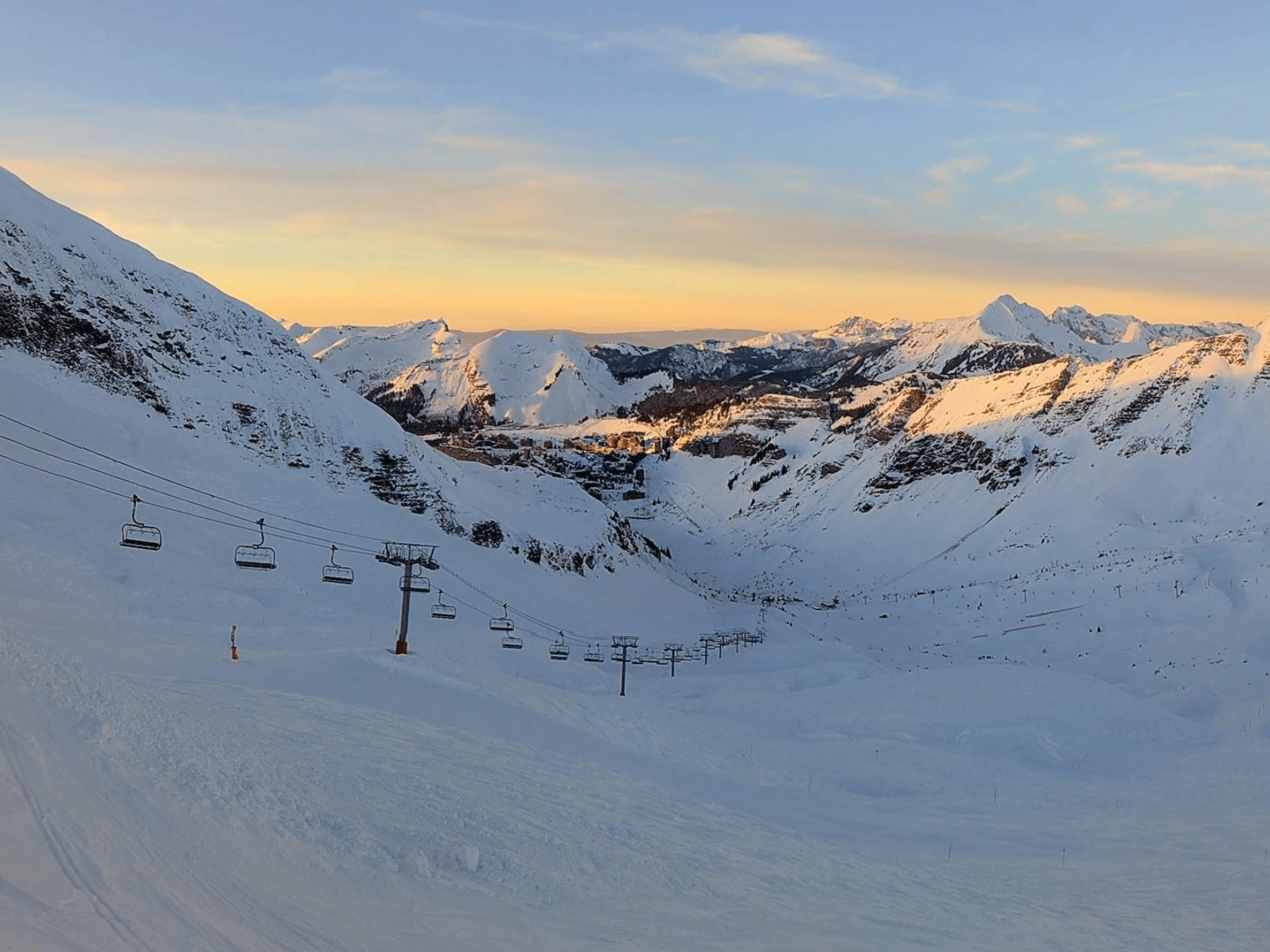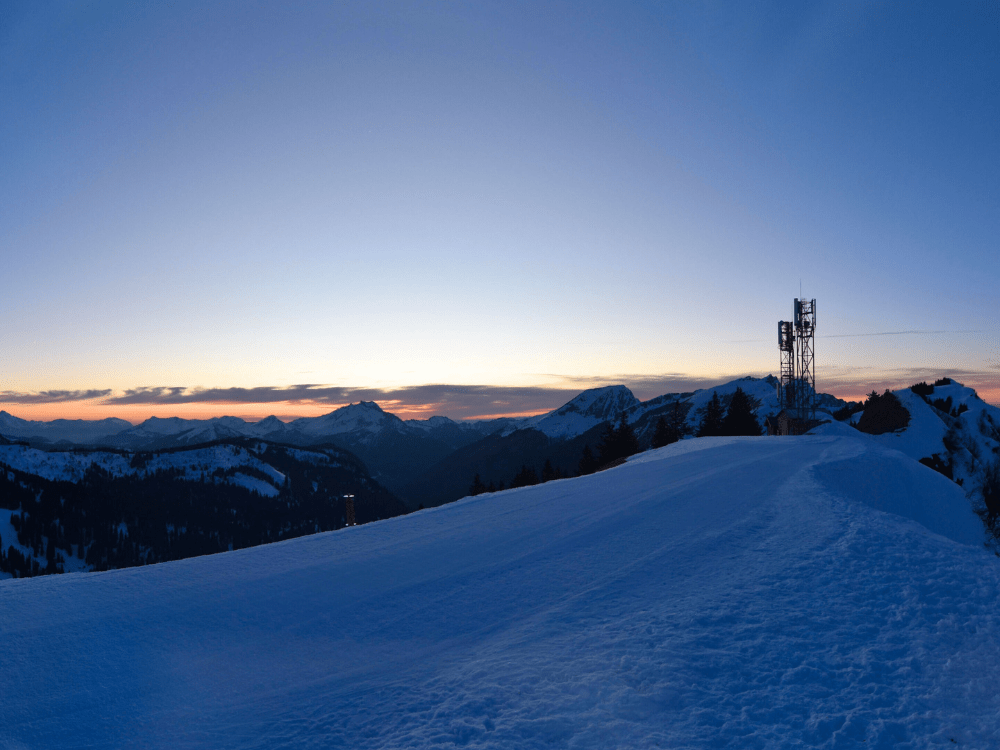

Avoriaz BIODIVERSITY
- HomePage
- Discover
- The resort
- Biodiversity
Unspoilt
Nature
The mountains are truly a biodiversity sanctuary, occupying just 25% of the world’s land, yet home to 85% of all species of amphibians, birds and mammals.
A whole diversity of wildlife lives in the Alps, having adapted to the extremes of the mountainous terrain and high altitudes.
The marmot, the chamois, the eagle and the ibex are some of the most iconic species amongst this mountain wildlife. But as you explore the Alps, you will realise that the wildlife of the mountains is just as rich and varied as the landscapes you’ll discover.
In 2018, the Portes du Soleil ski area set up a wildlife observatory. The aim was to list and monitor plant and animal species, identify sensitive areas and establish action plans accordingly.
Constant attention to water resources, habitats and biodiversity is essential to ensure wintersports fans and mountain lovers who come here to reconnect with nature may continue to do so for a long time to come.
Golden Eagle
Wingspan: 2 metres
Weight: approximately 5 kg
The golden eagle is one of the largest birds of prey that can be spotted in the Alps. The adult bird has light-coloured feathers on its underside and brown plumage on its upper side. The tail-end feathers are darker, almost black. The young birds are darker on top and bear characteristic large white patches under their wings. Their sex can be determined only by their size, the female being larger than the male.
This bird is generally silent, except during the mating season when they may let out a « yapping » sound. Note that this bird could easily be mistaken for the common buzzard (Buteo buteo), except that the latter species is much smaller.
This magnificent bird of prey is present across the entire domain, and eyries have been spotted in all of the Portes du Soleil massifs. Although it has been the victim of poaching, poisoning and other destructive behaviour in the past, the golden eagle is no longer a threatened species. It is, however, a sensitive bird that is best left undisturbed, especially during the reproduction period.
Like all birds of prey, the golden eagle is protected by law.

Rock Partridge
Size: 33 to 43 cm
The rock partridge is a gallinacean (same family as the black grouse and the rock ptarmigan) with grey feathers on its back and upper breast, and white wings striped with black. The face is white, the beak is red, and a black gorget stretches from the top of the beak to the bottom of the neck.
Both sexes are identical, except that the male is slightly larger. Another way to distinguish between them is by observing their behaviour. The rock partridge lives in groups of 2 to 12 individuals. It spends the summer at high altitude, on steep, well-exposed slopes, and returns to the valley for the winter months.
This gallinaceous mountain bird, originally from the more southern parts of the Alps, enjoys habitats with good sun exposure and can be seen in various places across the Portes du Soleil area.

Red Deer
Weight: approximately 100 kg for the hind, and 100 to 200 kg for the stag.
Height: 1.5 metres at withers
The red deer is one of the largest deer in France, where its numbers are on the increase. The adult male bears deciduous antlers (i.e. antlers which are shed every year and regrow). Its very first antlers are mere spikes of varying lengths. It takes several years for the antlers to develop into a more complex array of branches, known as « tines ». Note that there is no link between a stag’s age and the number of tines on its antlers.
The hind has no antlers and its head and body are more slender than the male’s. This makes it easy to distinguish between them, even when the male has shed its antlers and is thus known as a « buck » deer.
Portes du Soleil is home to significant numbers of red deer and these are monitored every spring.

Bearded Vulture
Wingspan: approximately 2.8 metres
Weight: between 5 and 7 kg
This is the largest of all European vultures. In 1987, it was reintroduced in Haute-Savoie where it had been wiped out and is now carefully monitored. The bearded vulture bears slate grey feathers on its upper side, except for the head which is an orangey-brown, like the breast. The underwing feathers are in shades ranging from grey to black. This applies to adult birds aged at least 7 years. The feathers of younger birds go through several stages before fitting this description. The bearded vulture can be identified by its enormous wingspan and the characteristic diamond-shaped tail. It is a soaring bird which relies on ascending currents to fly high over the mountain pastures, scree slopes and other exposed terrain in search of dead animals.
It can cover long distances searching for food and it isn’t unusual to observe in the skies above Chablais, individuals that have come from Switzerland or other parts of Haute-Savoie.

Black Grouse
Wingspan: 60 to 80 cm.
Length: approximately 60 cm
Weight: 800 to 900 gr for the female and 1 to 1.3 kg for the male.
In France, the black grouse can be found across much of the Alps (from the Chablais massif to the department of Var).
It is a sedentary, polygamous species and remains sociable all year round. There are substantial differences between the sexes, the males sporting black feathers and displaying a white lyre-shaped tail, as well as red wattle above the eyes. This bird has short, feathered legs.
In winter, it builds a kind of igloo in the snow where the temperature remains constant at around 4 °C.
Every year, a list is drawn up of all their favourite breeding grounds and wintering zones, to provide us with better knowledge of the species and help us to protect it.

Lynx
Weight: 17 to 30 kg
Height: between 50 and 70 cm at the withers
Recognisable by its light brown, black-speckled fur, the lynx is a discreet feline that lives only in forest habitats. It has a short, black-tipped tail, large paws with retractable claws, and black tufts at the tips of its ears. Its sex cannot be determined visually unless time is taken to observe their behaviour. The lynx is a carnivore that preys mainly on roe deer, chamois and hare.
This discreet species is very difficult to observe, as it moves stealthily and takes refuge in a tree if it feels threatened. It exists only in small numbers in the Chablais region, but can occasionally be spotted in the forest or near the roadside.

Mountain Hare
The mountain hare is a little smaller than its cousin, the brown hare (Lepus europaeus). It is found at high altitudes (usually above 2,000 metres) in the mountain pastures, grasslands, moorlands and scree. Both sexes bear the same coat: white with black-tipped ears in winter, and brown in summer.
The paws are wide and covered in fur, which allows it to travel without sinking in the snow.
Like the rock ptarmigan, this discreet animal is rarely seen and the clues to its presence can be confused with those of the European hare. It is mostly nocturnal.

Grey Wolf
Weight : 30 to 40 kg for the male, 20 to 30 kg for the female.
Height: 55 to 70 cm at the withers
This wolf of Italian descent can be seen in the Alps. It has a relatively short tail (reaching the animal’s hock) with a black tuft at its tip. The fur is in shades ranging from yellowish-brown under the belly to grey-black on the upper body. A black stripe runs down the front of the forelegs, and the head is grey-brown with white cheeks. But there are multiple variations in these indications as fur colouring can be very different from one wolf to another. It has short, rounded ears.
In recent years, the grey wolf has been regularly observed in the Valais region of Switzerland. In 2019, its regular presence was also witnessed in the Abondance valley. We also know that the wolf population spreads readily and that this species is a good coloniser. So it is quite possible to observe individuals, alone or in groups, exploring other sectors than their own (population spreading).

Chamois
Weight: 20 to 50 kg (depending on sex and geographical area)
Height: 75-80 cm at the withers
The chamois is the smallest of the caprin family (which includes the mouflon and the ibex). It can live for up to 25 years, but their usual lifespan is 15 or 16 years. They are easy to recognise thanks to their small ebony horns which, unlike a deer’s antlers, remain in place throughout the animal’s life. The horns start growing at birth and are already visible at the age of two months. The fur is light brown in summer with a black stripe along the backbone, becoming all black in winter. Only the head remains white, with a characteristic black stripe on each cheek.
This common species is found in its hundreds across the Portes du Soleil region and is relatively easy to observe. A keen eye can sometimes distinguish the males from the females, and even estimate their age group.

Alpine Ibex
Weight: male 65 – 100 kg ; female 35 – 50 kg
Height: male 75 – 90 cm, female 70 – 78 cm at the withers
The male has horns which grow in proportion to its age. The horns are wide in diameter and « adorned » with rings that create ridges on the front. The number of rings observed on the back of the horns allows us to determine the animal’s age. As for the female, the adult’s horns are 20 to 30 cm thinner and do not grow bigger. The Cornettes de Bise mountains are home to some 700 ibex. A population count is carried out every year in late July or early August under a Franco-Swiss joint operation. The individuals that are frequently spotted in Portes du Soleil (particularly in Avoriaz 1800, La Chapelle and Châtel) probably originate from this core population. Ibex generally stay near the summits which allow them to migrate from one massif to another. It is fairly rare to spot these rock-dwelling animals from the ski areas.

Marmot
Weight: 4 to 8 kg
Length: 50 to 60 cm
The marmot is a small burrowing animal which digs its warrens below the mountain pastures where it lives in family colonies, each of about 10 individuals. It is identifiable by its thick, dark yellow belly fur and its grey back.
The marmot is constantly on its guard and particularly wary of the golden eagle of which it is the staple food in summer. So, within each colony, certain individuals keep a lookout (while the others feed), repeatedly letting out an easily recognisable, strident call whenever it sees a threat. On this signal, all the other marmots return to their warrens and only re-emerge very cautiously.
Although they live in a fairly small number of conducive areas, marmots are present across the entire domain. In summer, their curiosity and co-existence with human beings sometimes bring them very close to hikers who are keen to feed them. This behaviour is very harmful to marmots as their digestive system cannot cope with bread, cakes and biscuits and they can develop diabetes and other ailments. These are wild animals and it is wise to observe an appropriate distance from them.

Rock Ptarmigan
Wingspan: approximately 55-66 cm
Length: approximately 38 cm
Weight: 430 to 550 gr
The ptarmigan has three different plumages that change with the time of year: white feathers in winter, brown feathers in summer with red wattle for the male, and a grey scale effect in autumn. This moulting of feathers enables the birds to blend better into their environment: white against the winter snow and grey-brown against the exposed scree in summer.
The ptarmigan can be found at high altitudes (at least 2000 metres) where it remains all year round. Although it is still present in the Portes du Soleil area, its numbers remain modest with around twenty active males during the breeding season. This species is closely monitored on an annual basis. It is not particularly shy and can sometimes be spotted just a few metres away from the slopes or ski lifts. It only survives because these little havens of peace are identified and protected. So please do not disturb its tranquillity – we’re counting on you!


LocalFauna
Avoriaz preserves its domain by carrying out environmental impact studies, in consultation with the National Forestry Office, the Hunting Federation and alpacists’ associations. The wildlife protection zones allow the reappearance of lynx, wolves, black grouse and rock ptarmigan (the snow hen) in our mountain pastures. Your observations are precious and the information that accompanies them (immature, area,…) even more, if you are able to provide them.
Help us identify the wildlife on the domain to better preserve it with the free Local Fauna application.











